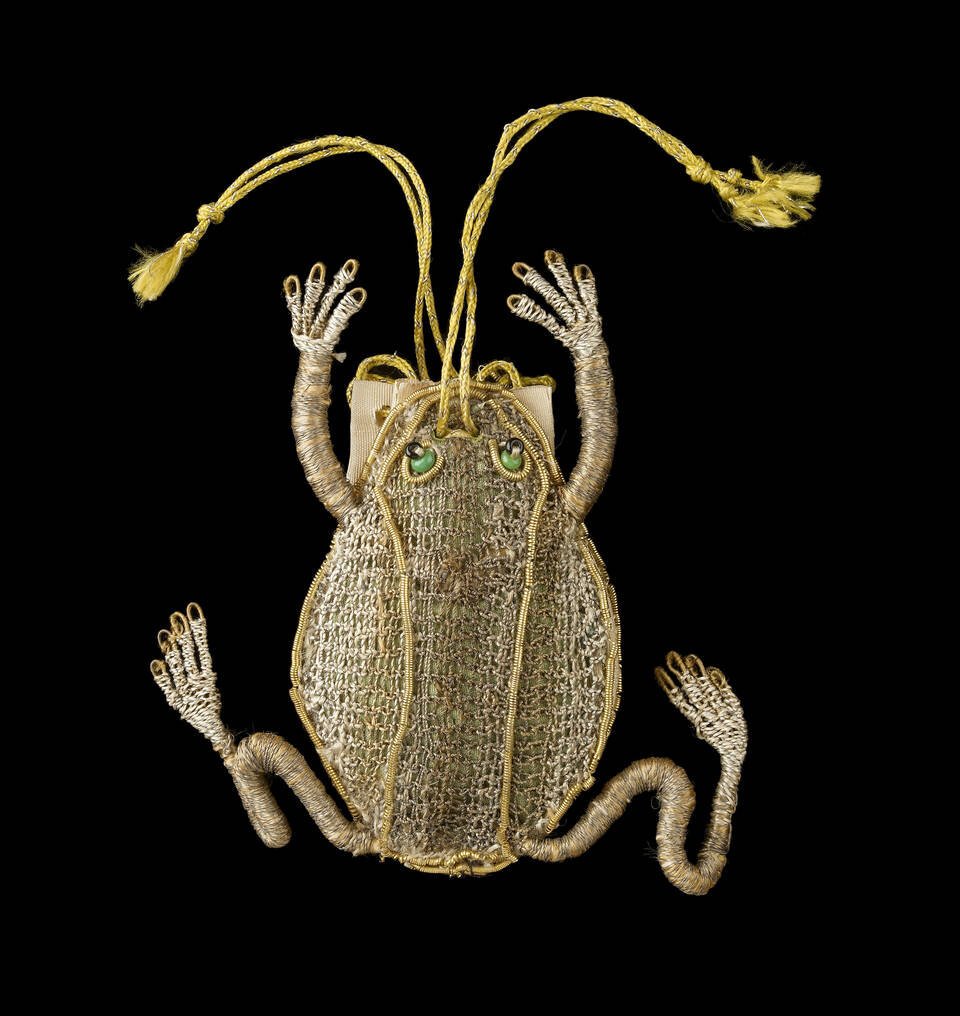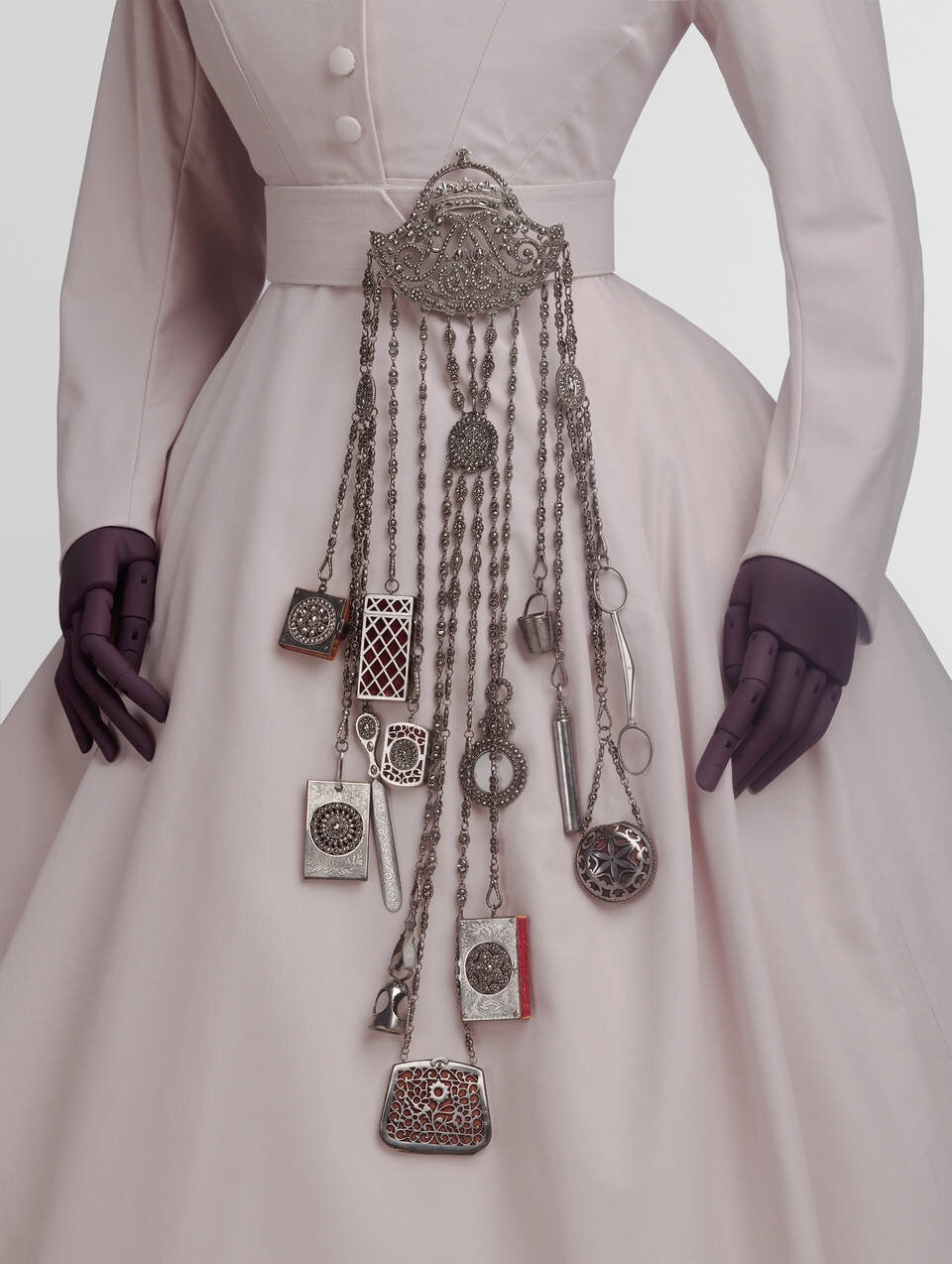Unpacking History
Handbags, backpacks, tote bags, briefcases and satchels, bags come in all sorts of sizes and shapes. Some provide clues about their contents while others give away nothing.
Bags have obvious functions that influence their forms, but they also offer up a public statement, sometimes taking on a powerful symbolic role of status and identity. Their surfaces have been used to communicate messages for example, ‘I am NOT a Plastic Bag’ on a recent tote by Anya Hindmarch and ‘My Body My Business’ on a handbag by artist and activist Michele Pred, continuing a long tradition of making personal or political messages. Early examples of this can be found in mottos such as ‘I pray God to be my guide’ that featured on small beaded purses dating from the 17th century, while the Victoria & Albert Museum in London has in its collection a small 1827 reticule bag printed with a poem promoting the abolition of slavery.
“Bags: Inside Out,” a new exhibition at the V&A running until 16 January 2022, is exploring the function, status, design, and making of bags across the world and throughout history, aiming to make us reflects on how and why we carry our most personal possessions, while also reminding us that bags have long been important representative of our identity.
“Bags can be very personal items, but at the same time they are so often present in the public sphere, highlighting who we are, and who we aspire to be,” says Tristan Hunt, Director of the V&A.
Bags were first and foremost designed as practical objects to hold our belongings. In China during the Shang Dynasty (1766–1121 BCE), men would wear purses as a signifier of power and status, while the development of coin currency in the fifth or sixth century is connected to the popularity of the drawstring purse in the West. In Japan in the Edo period (1614-1868), men would wear sagemono, hanging from their obi belt to store personal belongings, such as pipes, seals, or medicines. These container were secured in place by a netsuke (toggle) at the end of a cord.
Beside the functionality of keeping our most precious possessions with us at all times, the design of bags is also intricately linked to the evolution of fashion. While pockets started to be sewn into European men’s clothing in the 17th century, women continued to wear detachable tie-on pockets that could be tied around the waist and worn beneath a skirt, accessible through openings in the side of the gown and petticoat.
As the ‘Empire line’ became fashionable, women abandoned these tie-on pockets for ‘reticules’ or ‘indispensables’ – small pouches in lightweight fabrics gathered with cords and held in their hands. These early precursors of the handbag could be as whimsical as those found today such as Thom Browne’s handbag in the form of his dog Hector and the covetable milk cartoon handbag by Karl Lagerfeld for Chanel’s supermarket-inspired 2014 Autumn–Winter ready-to-wear collection. Some reticules were made to resemble everyday objects such a flower basket, or more exotic shapes such as pineapples and scallop shells, and would later influence the trend for using incongruous objects in bag design with the 1930s and ’40s “novelty bags” of Anne-Marie of Paris shaped like a mandolin, a telephone or a champagne bottle, which also herald more modern whimsical designs by Judith Leiber, Lulu Guinness and Anya Hindmarch. Amongst the objects on display at the V&A is an interesting 1935 art-deco leather clutch in the shape of the ocean liner Le Normandie, the most luxurious cruise ship of its time. It was offered as a gift to first-class passengers and also sold exclusively on-board.
The shape and size of bags are intimately connected with how we travel. In Medieval times, aristocrats would travel with several chests that were large enough to be used as furniture once they arrived at their destination, curator Lucia Savi writes in the exhibition catalogue, noting sturdy saddlebags needed to be securely fitted to horses, camels or donkeys. Up until the late 19th century when the first suitcases emerged, travelling long distance was mainly the privilege of the wealthy, who would take staff to carry the hefty water-proof canvas trunks which had heavy iron bases for protection and sturdiness. With mass travel in the early 20th century on ships and trains, bags had to be lighter and stackable while air travel prompted further new compactness.
Thierry Andretta, Chief Executive of Mulberry, which is sponsoring the V&A exhibition, remarks, bags are not only functional and beautiful, “they carry cultural and personal meaning as well as our belongings” and he notes they can be iconic pieces of design in their own right.
The exhibition showcases some of these readily identifiable designs that over the years have lost none of their allure and desirability from the Hermes ‘Kelly’ (a simple trapezoid bag first created in the 1930s that was later named in honour of Grace Kelly) and Gucci’s ‘Jackie’ handbag, named after Jacqueline Kennedy Onassis, to the Lady Dior (named after Princess Diana) and the Fendi Bagette.
From designer handbags to vanity cases and minaudieres, Bag: Inside Out provides an impressive look at a global obsession with highly covetable objects from the 16th century to today.
Some of the most unusual exhibits on show include a large embroidered purse used to protect the silver matrix of Elizabeth I’s Great Seal of England; a gas mask bag used by HRH Queen Mary during the Second World War; Winston Churchill’s red despatch box; and Margaret Thatcher’s grey Asprey handbag.





